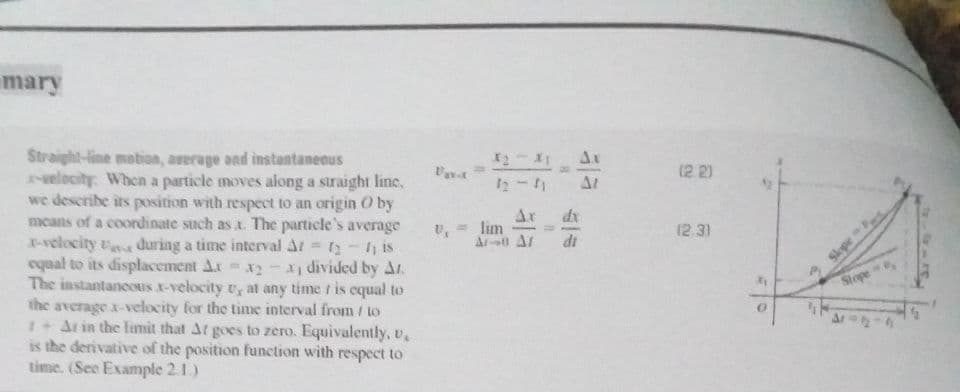Straight-line mobion, aserage and instantaneous elecity: When a particle moves along a straight line, we describe its position with respect to an origin O by means of a coordinate such as x. The particle's average -velocity during a time interval At 1-1h is equal to its displacement Ax The instantancous x-velocity r, at any time f is cqual to the average x-velocity for the time interval from / to Ar in the limit that At goes to zero. Equivalently, U. is the derivative of the position function with respect to time. (See Example 2.1.) Ar HI (2 2) Ar U, = lim Ar0 Ar 12. 31 di Skpe Stope X2 X divided by Ar. ar
Displacement, Velocity and Acceleration
In classical mechanics, kinematics deals with the motion of a particle. It deals only with the position, velocity, acceleration, and displacement of a particle. It has no concern about the source of motion.
Linear Displacement
The term "displacement" refers to when something shifts away from its original "location," and "linear" refers to a straight line. As a result, “Linear Displacement” can be described as the movement of an object in a straight line along a single axis, for example, from side to side or up and down. Non-contact sensors such as LVDTs and other linear location sensors can calculate linear displacement. Non-contact sensors such as LVDTs and other linear location sensors can calculate linear displacement. Linear displacement is usually measured in millimeters or inches and may be positive or negative.

Trending now
This is a popular solution!
Step by step
Solved in 2 steps with 1 images




